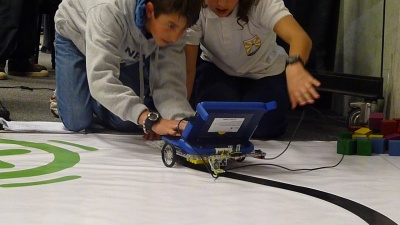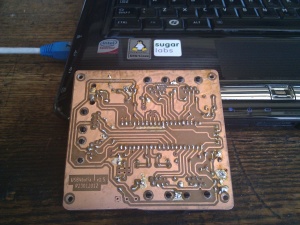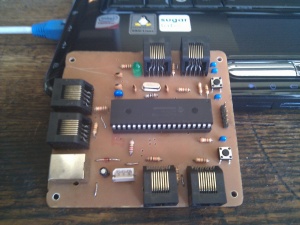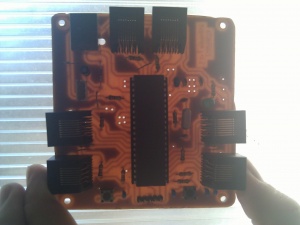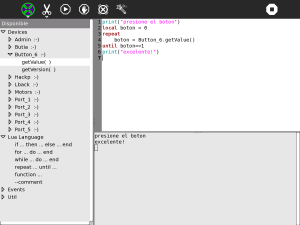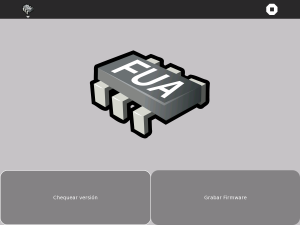Main page (English)
Contenido
Butiá Project
For full documentation please see Página_principal (in Spanish)
This project aims to create a simple platform, which makes tools more available to school students which can enable them to internalize programming the behavior of robots. The project seeks to expand the performance of the OLPC XO computer through Butiá's sensory capabilities, turning it into a mobile robotic platform. Currently the 1.0 Project implementation is in kit form, distributed to 28 public schools in Uruguay, with a set of sensors and components for mounting the sensors on the mobile platform where you put the XO computer. The Butiá project was developed keeping in mind the fact that adding new sensors or actuators to the platform is very simple, this opens the possibility for interested users to easily implement their own sensors and actuators. Even the industrial design of the robot is open allowing construction with recycled or low cost materials.
USB4butia
See also Usb4butia (in Spanish)
USB4Butiá is an input/output/USB board derived from the Usb4all and a shield made for that card. It is easy to build and specializes in using the robot Butiá 2.0 trying to simplify use and enhance their sensory capabilities and performance in a robust manner. The general objective of board:
A board design is open and designed with the objective that its construction is possible by hand allowing their accessibility and thus design freedom (more info: USB4butia - A Truly Free (as in Freedom) Input/Output Board)
The specific objectives are:
- Low cost
- Using components available in the local market
- Having ports connectors for devices which support plug and play and hotplug
- Bus for AX12 motors
- Handling PWM servo motors
- HackPoints for low level access
Construcción
Circuit board layout [1].
List of components Lista de componentes USB4butiá
Programming Languages
See also Lenguajes de programación (in Spanish)
The Butia Robot can be easily controlled from any programming language which supports TCP / IP connection.
TurtleBots
Turtle Art is a Sugar activity inspired by Logo which makes programming concepts available to children using a iconic graphical interface where each instruction is mapped as a block. Project Butia made changes adding some plugins that control various robotic kits such as Butia, Lego NXT, Lego WeDo, FollowMe and Sumbot. You can download the TurtleBots activity here.
The Butia palette supports hotplug plug and play I/O devices. Devices not currently connected are grey, devices connected are green and identify the port to which they are connected.
The Butia Extras palette is shown below. It supports the 8 additional I/O pins or HackPoints.
Butialo
Butialo is a user-friendly environment that allows programming of the Butiá in the Lua language. Butialo is a derivative of Pippy IDE which simplifies the creation of programs by autodetecting Butiá I/O components and offering snippets of code to access them. Download here
Python
A Python programming language API is available to program the Butiá robot's behavior .
- Butiá API in Python (Spanish)
- Examples in Python using the Python API (Spanish)
Butia Firmware
See Grabar_Firmware (in Spanish)
This activity allows the upgrading of the firmware of the USB4butia board.
Note
Depending on your operating system, you might need to execute the following 2 lines of code in Terminal to enable USB communication with the USB4butia
